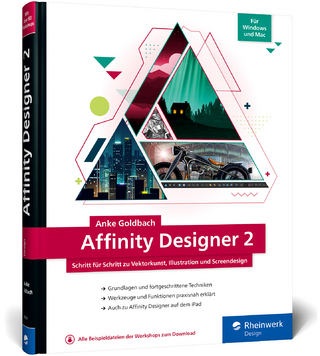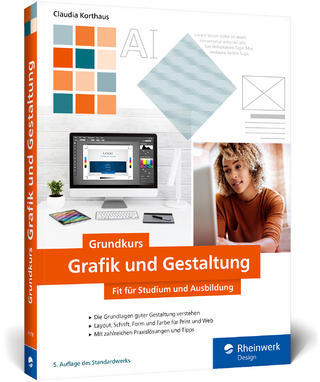
Introduction to Computer Graphics
CRC Press (Verlag)
978-1-138-58320-7 (ISBN)
- Keine Verlagsinformationen verfügbar
- Artikel merken
Introduction to Computer Graphics: A Practical Learning Approach guides students in developing their own interactive graphics application. The authors show step by step how to implement computer graphics concepts and theory using the EnvyMyCar (NVMC) framework as a consistent example throughout the text. They use the WebGL graphics API to develop NVMC, a simple, interactive car racing game.
Each chapter focuses on a particular computer graphics aspect, such as 3D modeling and lighting. The authors help students understand how to handle 3D geometric transformations, texturing, complex lighting effects, and more. This practical approach leads students to draw the elements and effects needed to ultimately create a visually pleasing car racing game. The code is available at www.envymycarbook.com
Puts computer graphics theory into practice by developing an interactive video game
Enables students to experiment with the concepts in a practical setting
Uses WebGL for code examples
Requires knowledge of general programming and basic notions of HTML and JavaScript
Provides the software and other materials on the book’s website
Software development does not require installation of IDEs or libraries, only a text editor.
What Computer Graphics Is
Applications Domains and Areas of Computer Graphics
Color and Images
Algorithms to Create a Raster Image from a 3D Scene
The First Steps
The Application Programming Interface
The WebGL Rasterization-Based Pipeline
Programming the Rendering Pipeline: Your First Rendering
WebGL Supporting Libraries
Meet NVMC
How a 3D Model Is Represented
Polygonal meshes
Implicit surfaces
Parametric surfaces
Voxels
Constructive solid geometry (CSG)
Subdivision surfaces
Data Structures for Polygon Meshes
The First Code: Making and Showing Simple Primitives
Self-exercises
Geometric Transformations
Geometric entities
Basic geometric transformations
Affine transformations
Frames
Rotations in Three Dimensions
Viewing transformations
Transformations in the Pipeline
Upgrade your client: Our First 3D Client
The Code
Handling the Transformations Matrices with a Matrix Stack
Manipulating the View and the Objects
Upgrade your client: Create the Observer Camera
Self-exercises
Turning Vertices into Pixels
Rasterization
Hidden Surface Removal
From Fragments to Pixels
Clipping
Culling
Lighting and Shading
Light and Matter Interaction
Radiometry in a Nutshell
Reectance and BRDF
The Rendering Equation
Evaluate the Rendering Equation
Computing the Surface Normal
Light Source Types
Phong Illumination Model
Shading Techniques
Advanced Reection Models
Self-Exercises
Texturing
Introduction: Do We Need Texture Mapping?
Basic Concepts
Texture Filtering: from per-Fragment Texture Coordinates to per-Fragment Color
Perspective Correct Interpolation: From per-Vertex to per-Fragment Texture Coordinates
Upgrade Your Client: Add Textures to the Terrain, Street and Building
Upgrade Your Client: Add the Rear Mirror
Texture Coordinates Generation and Environment Mapping
Texture Mapping for Adding Detail to Geometry
Notes on Mesh Parametrization
3D Textures and Their Use
Self-Exercises
Shadows
The Shadow Phenomenon
Shadow Mapping
Upgrade Your Client: Add Shadows
Shadow Mapping Artifacts and Limitations
Shadow Volumes
Self-Exercises
Image-Based Impostors
Sprites
Billboarding
Ray-Traced Impostors
Self-Exercises
Advanced Techniques
Image Processing
Ambient Occlusion
Deferred Shading
Particle Systems
Self-Exercises
Global Illumination
Ray Tracing
Multi-Pass Algorithms
Appendix A: NVMC Class
Appendix B: Properties of Vector Products
Bibliography
Index
| Erscheint lt. Verlag | 31.12.2023 |
|---|---|
| Zusatzinfo | 16page color insert; 204 Illustrations, black and white |
| Verlagsort | London |
| Sprache | englisch |
| Maße | 152 x 229 mm |
| Themenwelt | Mathematik / Informatik ► Informatik ► Grafik / Design |
| ISBN-10 | 1-138-58320-0 / 1138583200 |
| ISBN-13 | 978-1-138-58320-7 / 9781138583207 |
| Zustand | Neuware |
| Haben Sie eine Frage zum Produkt? |
aus dem Bereich


